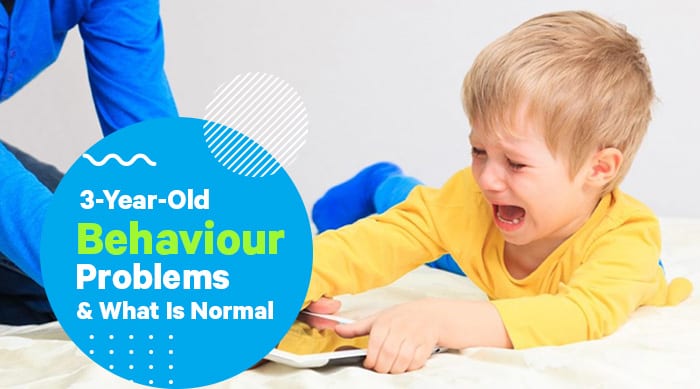“`html
Understanding and Managing Behavioral Problems in 3-Year-Olds
Hello, super moms and dads! ? Are you wondering why your sweet little three-year-old is suddenly throwing epic TantrumFests or transforming into a tiny defiance machine? Fear not! You’re about to dive into a treasure trove of wisdom that will help you navigate the choppy waters of toddler behavior. ?
Welcome to your go-to guide for understanding and managing behavioral problems in 3-year-olds. Know this—you’re not alone in your parenting journey! Many parents experience the ups and downs of raising toddlers, and it’s perfectly normal. And here’s the best part: with a sprinkle of patience and a dollop of knowledge, you can help your child emerge from their behavioral roller coaster ride smoother than ever. ??
Why the Wild Behavior at Three?
Three-year-olds are like little explorers, constantly discovering new territories of autonomy and expression. This is a time of significant developmental milestones where your child’s personality blooms like springtime flowers. ? They’re learning to communicate, socialize, and understand the world around them. However, with all these new skills come new challenges—they’re testing boundaries and learning the power of the word “no” (or their new favorite, “NOOOOO!”). ?
Common Behavioral Issues and What They Mean
Let’s unwrap some of the typical behavioral conundrums you may encounter:
- Tantrums: These are like your tot’s natural disaster, erupting when they’re overwhelmed by emotions or can’t get their way. Think of a tantrum as your little one’s Mount Vesuvius moment. ?
- Defiance: This one’s the stubborn standoff—when your little darling decides to dig in their heels, cross their arms, and challenge the family rules.
- Aggression: Biting? Hitting? Welcome to the wild side. While worrying, these behaviors are often a sign of frustration or a need for attention. ?
- Whining: Ah, the soundtrack of parenting—whining can be a call for help or an attempt to wear you down until you give in.
Now, don’t fret! These behaviors, while exhausting at times, are mostly typical and manageable. Up next, we discuss how to handle these situations with grace and confidence.
Strategies for Managing Behavioral Problems
To help you form your game plan, here are some field-tested strategies:
- Stay Calm: Keep your cool. When you’re calm, you teach your child that even in the face of a Category 5 tantrum, they’re safe, and the storm will pass. ????
- Consistency is Key: Kids thrive on consistency. Ensuring that you have set routines and clear boundaries makes the world more predictable and less scary for your little one.
- Positive Reinforcement: Catch them being good! Positive attention for positive behavior goes a long way in encouraging your child to repeat those actions.?
- Time to Talk: Once the tsunami of tantrum subsides, teach them the invaluable skill of using words to express their feelings. ???
Remember, each child is unique and may respond differently to various strategies. It’s about finding what resonates best with your kiddo and tweaking your approach to suit their individual needs.
And there’s more! Keep reading for a deep dive into specific behaviors and comprehensive strategies to guide your adventurous three-year-old through their personal growth campaign. It’s a journey of love, learning, and invaluable life lessons. Onward, brave parents, to the next chapter of this insightful odyssey! ??
“`

“`html
The Essential Guide to Behavioral Problems in 3-Year-Olds
Greetings, exceptional parents! If you’re puzzled by your usually angelic 3-year-old’s sudden bursts of defiance, tears, and tantrums, this definitive guide is brimming with insights just for you. Today’s adventure is all about tackling those perplexing moments like a pro. So, let’s embrace the chaos and turn it into an opportunity for growth!
Five Key Insights to Prepare for Behavioral Quests with Your 3-Year-Old
1. Understand the “Why” Behind the Behavior
It’s crucial to recognize that your 3-year-old is not just acting out. They’re often wrestling with big emotions they don’t fully understand or have the words to express. Developmentally, they’re treading the line between relying on you and wanting independence, which can result in some pretty stormy weather in the emotional realm.
2. Set the Scene for Success
Create environments and routines that offer a sense of security and predictability for your child. This doesn’t mean stifling their independence but rather providing a supportive framework within which they can explore and express themselves safely.
3. Embrace Empathy
Putting yourself in your little one’s shoes can work wonders. Try to view situations from their perspective to better understand their responses. This empathy will guide your reaction and help you teach them how to deal with their feelings constructively.
4. Positive Attention Goes a Long Way
Catch your child being good and praise those moments. Your acknowledgment not only boosts their self-esteem but also reinforces the behavior you want to see more of.
5. Keep Your Toolbox Handy
Equipping yourself with a variety of strategies is essential. The ‘one-size-fits-all’ approach doesn’t work with toddlers, so be ready to adapt your techniques based on what resonates with your child’s personality and the specific circumstances you face.
Why Are We Seeing Mount Toddler Erupt?
Imagine being on the brink of a world of discovery yet not having all the tools you need to navigate it. That’s your 3-year-old for you! Emotions are brewing like a storm beneath the surface, set off by the slightest shift. They’re testing boundaries and buttons equally, all in a quest to find their own little space in the vast world.
Decoding the Behavioral Matrix of a Three-Year-Old
Let’s address some of the frequently encountered behaviors and consider their underlying messages:
- Tantrums: An emotional overflow, often due to frustration or exhaustion. Tantrums are your child’s way of saying, “I’m overwhelmed, and I need help to regain control.”
- Defiance: Sometimes, a bid for autonomy, sometimes a test of limits. Defiance says, “I’m learning what I can do and how far I can go.”
- Aggression: A common response when words fail. Aggression can mean, “I’m struggling to express myself.”
- Whining: Often a signal of unmet needs. Whining translates to, “I need your attention or support.”
Tactics to Triumph Over Troublesome Tendencies
For every storm cloud of challenging behaviors, there’s a silver lining. Use these practical strategies to dissipate the tempest:
- Model the Calm: Your child looks to you; showing them how to stay composed in the midst of chaos is a powerful lesson.
- Routine Reigns Supreme: A predictable routine can act as both compass and anchor, guiding and steadying your child’s day.
- Highlight the Positive: Make a big deal out of good behavior. This not only feels great for your child but encourages them to repeat what earned them praise.
- Communication is Crucial: Post-tantrum, engage in calm conversation. Teach that while it’s ok to have intense feelings, there are ways to express them that don’t involve nuclear meltdowns.
Every child’s personality and reactions are distinct, and some paths may take a bit more navigation than others. Testing different approaches to see what clicks for you and your tiny human is all part of the grand exploration of parenting.
Ready to turn behavioral boulders into stepping stones? Let’s continue this enlightening expedition, discovering more profound methods to aid your little one’s journey towards emotional understanding and self-control. Happy parenting, and may your path be lined with joyous discoveries and growth-filled moments!
“`
See more great Things to Do with Kids in New Zealand here. For more information see here
Disclaimer
The articles available via our website provide general information only and we strongly urge readers to exercise caution and conduct their own thorough research and fact-checking. The information presented should not be taken as absolute truth, and, to the maximum extent permitted by law, we will not be held liable for any inaccuracies or errors in the content. It is essential for individuals to independently verify and validate the information before making any decisions or taking any actions based on the articles.




